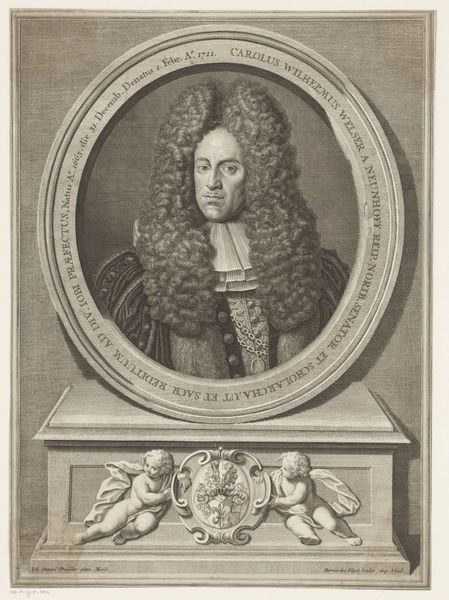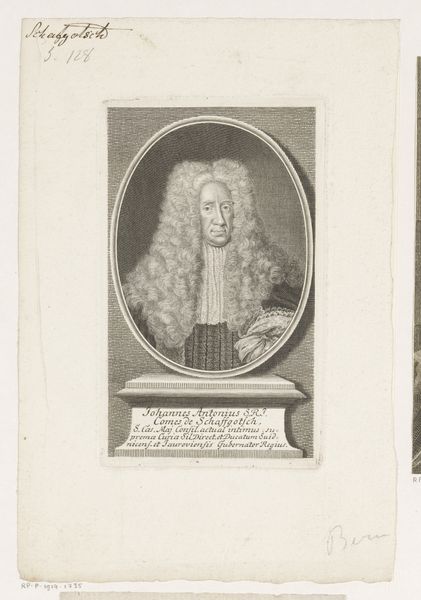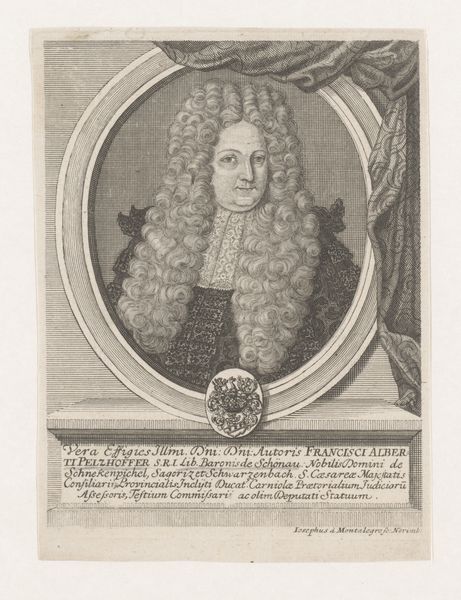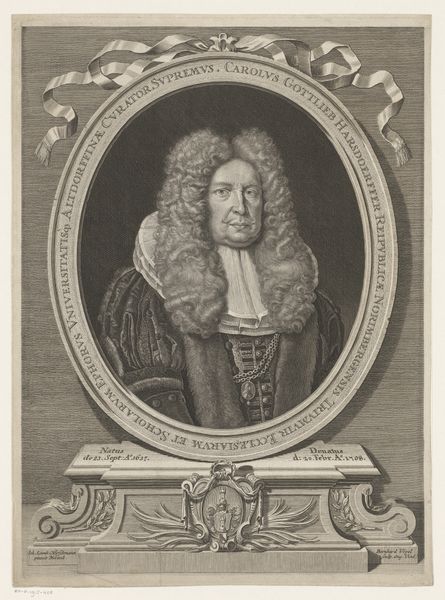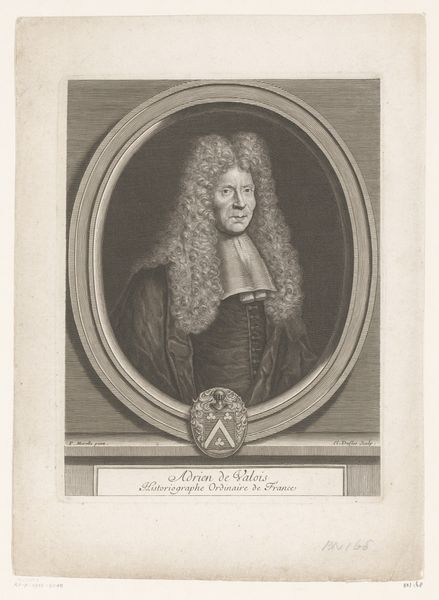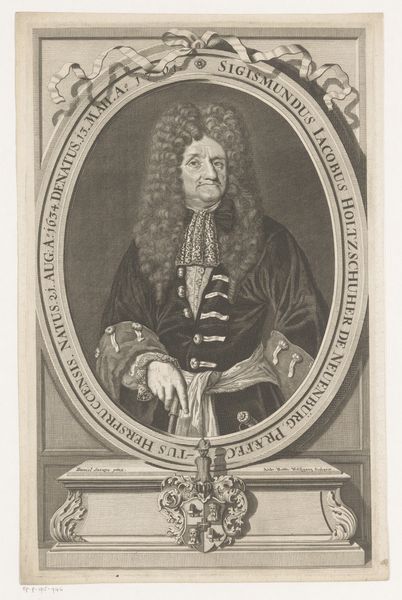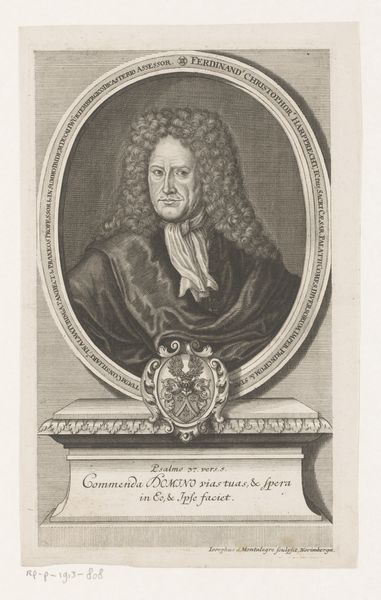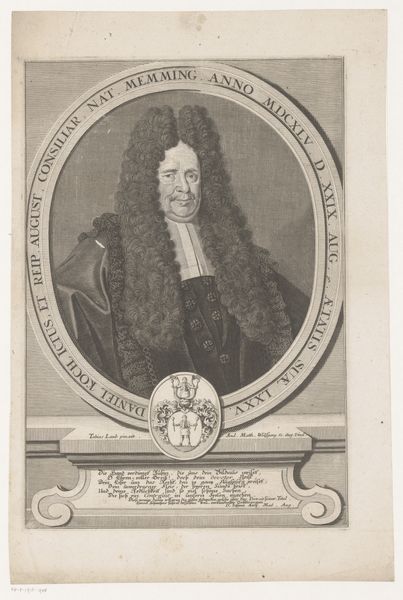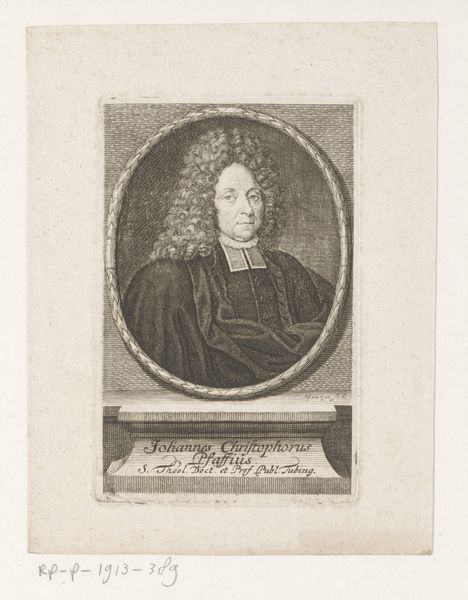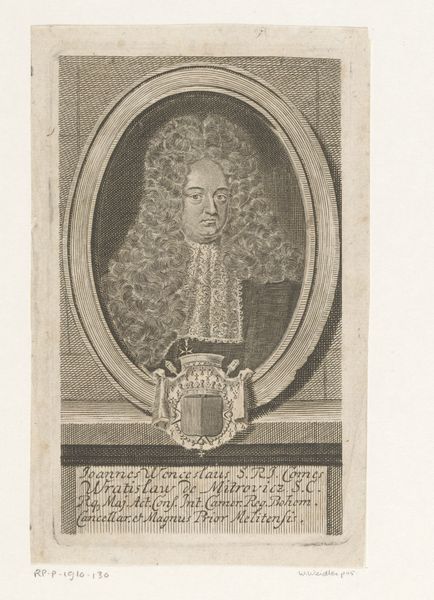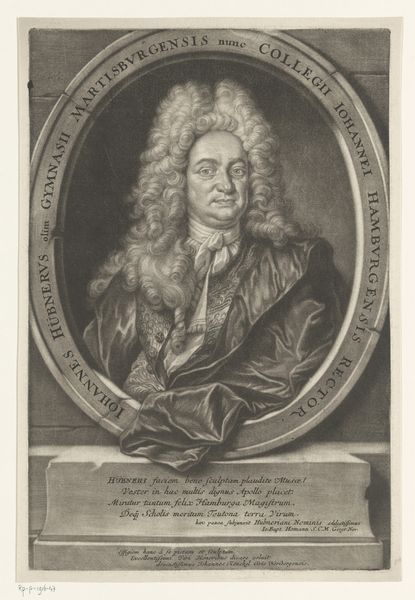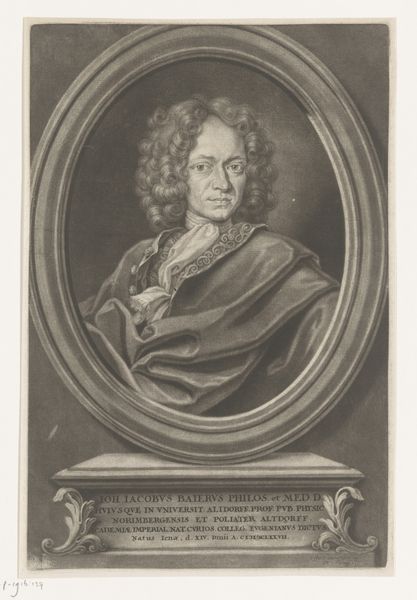
intaglio, engraving
#
portrait
#
baroque
#
intaglio
#
old engraving style
#
line
#
academic-art
#
engraving
Dimensions: height 228 mm, width 173 mm
Copyright: Rijks Museum: Open Domain
This is a portrait of Heinrich Zipfel by Christian Romstet, created sometime around the late 17th or early 18th century. It’s an engraving, meaning that the image was incised into a metal plate, likely copper, and then printed onto paper. Look closely, and you'll notice the incredible detail achieved through the meticulous labor of the engraver. Each line, each curve of Zipfel's elaborate wig, required skilled hands and careful control of the burin, the engraving tool. Consider the time and effort involved in creating this portrait. Engravings like these were not just images; they were a testament to skill and artistry. The print also speaks to the social status of both the sitter and the artist. Zipfel, with his imposing wig and formal attire, undoubtedly belonged to the upper echelons of society, and commissioning an engraving like this was a way of asserting his status. At the same time, it provided the artist with valuable exposure. By understanding the materials, processes, and social context of this engraving, we gain a deeper appreciation for its artistic and cultural significance.
Comments
No comments
Be the first to comment and join the conversation on the ultimate creative platform.
